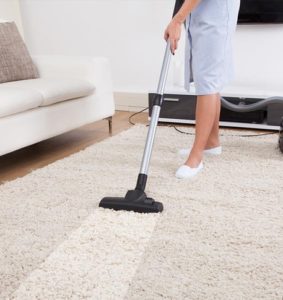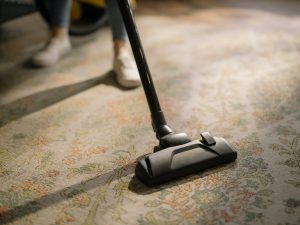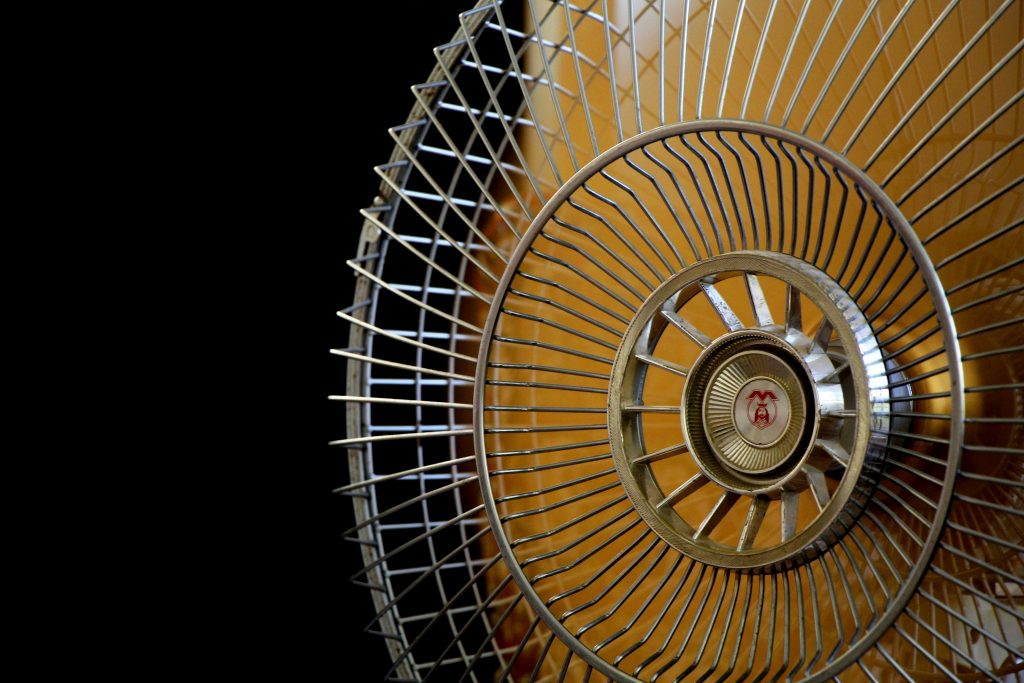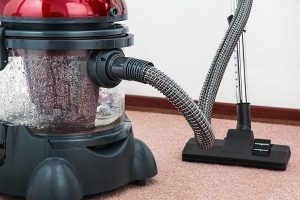Have you ever stepped into your freshly cleaned living room only to find that your carpet feels crunchy underfoot? If so, you’re not alone! Many homeowners have experienced this strange phenomenon and are left wondering why their carpets are so crunchy after being cleaned. In this article, we’ll explore the possible causes of a crunchy carpet in order to help you determine what is causing yours.
Carpets can become crunchy after cleaning due to a variety of factors. These range from the type of cleaning method used, to the type of carpet fibers and even the amount of moisture present on the fibers post-cleaning. Additionally, there may be other environmental factors at play that could be contributing to the crunchiness of your carpets.
No matter what is causing your crunchy carpets, it’s important to understand why they feel this way and how you can avoid it in future cleanings. Read on for more information about why carpets may become crunchy after cleaning and what steps you can take to prevent it from happening again!
Causes Of Carpet Crunchiness
The crunchiness of carpets after cleaning is caused by a variety of factors. One of the main causes is improper drying techniques. When carpets are not dried properly, water droplets remain on the surface, resulting in stiff and crunchy fibers when they dry.
Another common cause is using too much chemical cleaner while vacuuming. Too much cleaner can leave behind residue that makes the carpet stiff.
Finally, some carpets may be made with materials that do not respond well to moisture or cleaning products, and this can also lead to crunchiness. Therefore, it’s important to use the right amount of cleaning product and proper drying techniques when dealing with carpets to avoid crunchiness.
Types Of Carpet Cleaners
 Carpet cleaning can be done with a variety of methods, each having its own advantages and disadvantages. The most common type is steam cleaning. This method uses pressurized hot water to break down dirt and debris from deep inside the carpet fibers. It’s effective at removing odors and stains, but may not be suitable for delicate carpets or carpets that are prone to shrinking.
Carpet cleaning can be done with a variety of methods, each having its own advantages and disadvantages. The most common type is steam cleaning. This method uses pressurized hot water to break down dirt and debris from deep inside the carpet fibers. It’s effective at removing odors and stains, but may not be suitable for delicate carpets or carpets that are prone to shrinking.
Another popular option is dry cleaning (like Safe-Dry!),which uses absorbent chemicals instead of water. This method is fast and requires minimal drying time.
Lastly, shampooing is an effective way to deep clean carpets without using any water or chemicals. A foaming solution is applied to the carpet and then scrubbed in with a brush or machine before being vacuumed up. Shampooing can remove ground-in dirt and debris as well as stubborn stains or odors; however, it takes a longer time for carpets to dry after shampooing than after other methods of cleaning.
Overall, there are various options when it comes to choosing a carpet cleaner that works best for your unique situation; just make sure you understand all the pros and cons beforehand so you know what type of cleaner will work best for your needs.
Impact Of Heat On Carpet Fibers
Heat has a significant effect on carpets when they are cleaned. It can cause them to become crunchy and stiff.
The increased heat causes the fibers to expand, resulting in an uncomfortable crunching noise when walked on. This is due to a number of reasons:
– The Carpet Fibers:
– Heat causes the fibers to relax and expand, making them more prone to damage from vacuuming or brushing.
– Heat also reduces the strength of the fibers, making them more susceptible to breaking or tearing.
– Finally, heat can cause some synthetic fibers to shrink, resulting in an uncomfortable crunchy texture.
– The Carpet Padding:
– Heat from cleaning can cause the carpet padding beneath the surface of the carpet to become brittle and break down into tiny particles, which can create a crunchy sound.
– Additionally, heat can cause the padding to become compressed, reducing its ability to absorb sound and creating an even louder crunching noise when walked on.
– The Cleaning Solution:
– Many chemical-based cleaning solutions contain detergents that react with heat and break down into smaller molecules that can penetrate deeper into the fibers of the carpet, resulting in a stiffer feeling underfoot.
– Furthermore, these detergents can leave behind residue which can make carpets feel sticky and crunchy when dry.
In summary, heat has a major impact on carpets when they are cleaned as it affects both their fibers and padding as well as causing residues from cleaning solutions left behind after drying. As such it is important for those who clean carpets to be aware of this potential issue and take steps to minimize it where possible.
Effectiveness Of Cleaning Solutions
Solutions containing high concentrations of detergents and water can cause the carpet fibers to dry out and become brittle, leading to a crunchy texture. This occurs because the detergent breaks down the natural oils found in the fibers and removes any dirt or grime that has built up over time. Additionally, the heat generated by the cleaning tools used can further dry out the fibers, causing them to become stiff and crunchy.
Chemical-based solutions are often more effective than traditional cleaners such as soap and water. These types of solutions contain surfactants which help to loosen dirt particles from carpets, making them easier to remove. The surfactants also help to break down oily residue that has accumulated on the surface of carpets over time. Chemical-based solutions can be especially effective at removing deep-seated stains that have set in for an extended period of time. While chemical-based cleaners are more effective than traditional cleaning methods, they can also be harsher on carpets and may lead to increased crunchiness after cleaning.
 Finally, it is important to use a vacuum cleaner regularly when trying to maintain clean carpets. Vacuuming helps remove dirt particles that have settled into carpet fibers which leads to reduced staining and less wear on the fibers themselves. Additionally, vacuuming helps lift off dust and other debris that may have settled onto carpets which could cause snagging or clumping if not removed properly. Regular vacuuming will reduce the amount of dirt buildup on carpets and help keep them looking fresh for longer periods of time, reducing the chances of them becoming crunchy after being cleaned.
Finally, it is important to use a vacuum cleaner regularly when trying to maintain clean carpets. Vacuuming helps remove dirt particles that have settled into carpet fibers which leads to reduced staining and less wear on the fibers themselves. Additionally, vacuuming helps lift off dust and other debris that may have settled onto carpets which could cause snagging or clumping if not removed properly. Regular vacuuming will reduce the amount of dirt buildup on carpets and help keep them looking fresh for longer periods of time, reducing the chances of them becoming crunchy after being cleaned.
Carpet Drying Processes
Carpets become crunchy after cleaning due to the drying process. This is caused by trapped moisture that accumulates during the cleaning and drying stages. There are a few methods for properly drying carpeting:
1. Natural Air Drying: This process involves allowing air to naturally circulate through the room. Open windows and use fans to help move air around and dry the carpet quickly.
2. Absorbent Pads: These pads are used to absorb moisture from the carpet, helping it dry faster and more thoroughly.
3. Professional Carpet Dryers: Professional dryers are available that use heated air or steam to accelerate the drying process.
Ultimately, proper drying of carpets after cleaning is an important step in keeping them looking fresh and new. Following these processes will ensure they stay crunch-free while maintaining their quality over time.

Use Of Residual Detergents
Carpets may be crunchy after cleaning due to the use of residual detergents. This can occur when too much shampoo or cleaning agent is used, and not all of it is rinsed out with water. The excess soap left in the carpet fibers can cause a stiffening effect and lead to a crunchy texture. It is important to consult instructions on the product label to ensure that the correct amount of detergent is used and thoroughly rinsed away.
Another possible cause of crunchy carpets is using too much water during cleaning. Excessive amounts of water can make carpets damp, leading to a crunchy texture when they dry. This can be avoided by using just enough water for an effective clean, without over-saturating the carpet fibers.
Over-application of cleaners can lead to carpets becoming crunchy after cleaning. This is because the detergent solution left behind in the carpet fibers can cause them to become stiff and brittle. When this happens, any pressure applied to the carpet will cause it to make a cracking sound. Even vacuuming can cause this crunchy sound. Additionally, if too much cleaner is applied, some of it may remain in the carpet after drying and create an unpleasant smell.
It’s important for cleaners to use just enough detergent solution so that they don’t leave behind a residue that will make carpets crunchy or smelly. This also helps prevent overuse of chemicals which can be damaging to carpets in the long run. To avoid this problem, cleaners should always follow product instructions closely when using detergents and other cleaning solutions on carpets.
When used properly, carpets should come out looking and feeling soft and clean without any crunchiness or odors. Professional cleaners who understand how much detergent solution is needed for each job can help ensure that carpets stay looking great and are not damaged by chemical overloads.
Aggressive Cleaning Techniques
Carpets can become crunchy after cleaning due to the use of aggressive cleaning techniques. These techniques involve the use of highly concentrated detergent, high pressure and heat, and scrubbing with a stiff brush. These methods are often used to remove tough stains and dirt from carpets, but they can also cause excessive dryness if not done correctly.
The following items should be taken into consideration when using aggressive cleaning techniques:
* Use a mild detergent solution that is specifically designed for carpets to avoid over-saturating or damaging the fibers.
* Clean small areas at a time and keep the pressure low so as not to damage or fray the carpet fibers.
* Ventilate the area during and after the cleaning process in order to reduce humidity levels that could cause further dryness.
* Test any new product on an inconspicuous area of the carpet first in order to ensure that it won’t cause any damage or discoloration.
* Use a vacuum cleaner afterwards to remove any excess moisture and fluff up the carpet fibers.
When done properly, aggressive cleaning techniques can help remove stubborn dirt, but it’s important to take precautions in order to avoid damaging your carpet or making it crunchy. By following these steps, you can ensure that your carpets remain soft and clean while avoiding unnecessary damage.
Use Of Hard Brushes Or Vacuum Attachments
When it comes to aggressive cleaning techniques, the use of hard brushes or vacuum attachments can be a major factor in why carpets become crunchy after cleaning. The stiffness of these tools can make carpet fibers stand up and break off more easily than softer brushes. As a result, carpets may become rough and crunchy during the drying process.
The solution to this issue is to ensure that a proper vacuum cleaner with soft bristles is used when cleaning carpets. Additionally, a gentle vacuuming technique should be employed while avoiding any excessive scrubbing or brushing of the carpet fibers. This will help reduce the amount of fiber breakage and minimize the risk of having crunchy carpets afterwards.
Finally, spot-cleaning difficult areas with a damp cloth is often recommended as an alternative to using hard brushes or vacuum attachments. This method helps maintain the integrity of delicate fibers while also removing dirt and stains efficiently.
Poorly Maintained Equipment
 Poorly maintained equipment can be a major factor in why carpets are crunchy after cleaning. If the machinery used to clean the carpet is not functioning properly, it can cause fibers to become matted together and create an unpleasant crunching sound when walked on. This can be especially true for those who use rented equipment or machines that are not regularly serviced by a professional. Additionally, if the machine does not have high-quality brushes or rollers, it may not be able to reach deep into the carpet and remove dirt and debris efficiently.
Poorly maintained equipment can be a major factor in why carpets are crunchy after cleaning. If the machinery used to clean the carpet is not functioning properly, it can cause fibers to become matted together and create an unpleasant crunching sound when walked on. This can be especially true for those who use rented equipment or machines that are not regularly serviced by a professional. Additionally, if the machine does not have high-quality brushes or rollers, it may not be able to reach deep into the carpet and remove dirt and debris efficiently.
Another issue with poorly maintained equipment is that it may not extract enough water from the carpet after cleaning. Leftover water can settle into the fibers of the carpet which can result in a crunchy texture. Additionally, if there is too much leftover water on the surface of the carpet, it can produce bacteria growth which leads to a bad odor. This can also contribute to making carpets crunchy after they have been cleaned.
To avoid these issues, it’s important to make sure all cleaning equipment is well-maintained and up-to-date before using it on carpets. It’s also important to ensure that thorough extraction of water occurs following each cleaning session so as to avoid any possible bacterial growth or dryness that could lead to crunchiness in carpets. Taking these steps will help keep carpets soft and plush after each cleanse.
Improper Airflow In The Room
Moving on from poorly maintained equipment, another potential cause of a crunchy carpet after cleaning is improper airflow in the room. This can be caused by several factors, such as not using an air mover, having an air filter that isn’t powerful enough, or having windows and doors that are closed while the cleaning process is occurring. All three of these issues can lead to excess moisture being left behind in the carpet fibers after the cleaning is complete.
Here are a few key points to consider when trying to improve your indoor air quality and reduce the chance of leaving carpets feeling crunchy:
* Use an air mover if possible to help accelerate drying time.
* Make sure your air filter is powerful enough to remove airborne particles from the room.
* Open up windows and doors for improved ventilation during the cleaning process.
By following these steps you can help prevent poor indoor air quality which can lead to a crunchy carpet after cleaning. Taking proactive measures with regards to proper ventilation will ensure that carpets feel soft and clean for longer periods of time.
Pre-Existing Damage To The Carpet Fibers
The third possible reason why carpets may be crunchy after cleaning is pre-existing damage to the carpet fibers. This could include things like areas of matting, worn and frayed patches, or accidental tears. When these areas are exposed to moisture from a professional cleaning process, the damaged fibers may stiffen up or curl themselves around one another, creating an uneven surface that can be crunchy when walked on.
These damaged areas will need to be addressed before attempting any further cleaning. One way is to cut away any loose threads or frayed edges in order to prevent them from becoming tangled with other fibers during the cleaning process. Alternatively, if the damage is too extensive, it might be necessary to replace that section of carpet entirely.
In both cases, a professional carpet cleaner should be consulted before taking any action. They will be able to assess the extent of the damage and advise on the best course of action for restoring your carpets back to their original condition.
The Role Of Allergens Or Microbes In Carpet Fibers
Carpets can also become crunchy after cleaning due to the presence of allergens or microbes that may have been embedded in the fibers. These microscopic particles can cause the carpet to feel stiff and uncomfortable, making it hard to walk on.
The following are some of the most common causes of crunchy carpets:
1. Dust mites: Dust mites are tiny creatures that feed off of dead human skin cells. They can be found living in carpets and furniture, and their waste products can create an uncomfortable feeling when walking on a carpet.
2. Mold spores: Mold is another type of microorganism that can grow in damp areas, such as bathrooms or basements. Its spores can be transferred onto carpets if they are not properly dried after a cleaning session.
3. Pollen: Pollen is a fine powder produced by trees and plants during certain times of the year. It’s light enough to settle into carpets and cause irritation when breathed in or walked on over time.
4. Animal dander: Animal dander is a mix of tiny skin flakes, fur, and saliva that can accumulate on carpets over time if not vacuumed regularly. This debris can cause allergies and discomfort when walking on it due to its coarse texture.
In order to avoid these allergens or microbes from settling into your carpet fibers, it’s important to regularly clean and vacuum your carpets using quality products designed for this purpose as well as investing in regular professional cleaning services which will help remove these allergens from deep within the fibers for long-term comfort and enjoyment of your carpets!
Use Professionals To Avoid A Crunchy Carpet
To prevent a crunchy carpet, it’s important to use the right cleaning technique. Contact the professionals at Safe-Dry Carpet Cleaning of The Woodlands for a fast, effective, and guaranteed cleaning.
Schedule online today!










